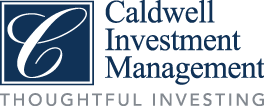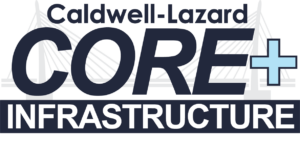Market Overview
Global equities receded for a third consecutive month in October, as the fallout from higher-for-longer interest rates continued to ripple across markets.
Stock markets worldwide struggled to gain traction during the month, as bond yields continued to rise after key central banks warned earlier that they were prepared to keep interest rates at elevated levels for a protracted period of time to quell inflation. Against this backdrop, all eyes were on the U.S., where a resilient domestic economy and robust labour market have fueled upward price pressure, leading the Federal Reserve, the world’s most influential central bank, to adopt the “higher for longer” credo as its official interest-rate policy stance.
With U.S. interest rates at a 22-year high, stock markets rose—and yield pressure eased—in mid-month after a handful of prominent Fed officials hinted that the U.S. central bank was finished with raising rates. The relief rally was short-lived, however, after the Fed Chair reiterated that any decisions on raising interest rates would depend on how the economy and inflation were trending. While investors expected the Fed to hold interest rates steady in November, they were uncertain about what it would do after that, which added to the downbeat market sentiment. After briefly exceeding the psychologically important threshold of 5% late in the month, which had not been breached since July 2007, the yield on the benchmark 10-year Treasury note ended October at 4.93%, 36 basis points (bps) higher than a month earlier.
At the same time that markets were grappling with the risks posed by a strong U.S. economy, they were confronted with a different set of risks across the Atlantic, where investors worried that the eurozone’s deteriorating economic outlook would adversely impact the global economy. After lifting interest rates 10 consecutive times to a record high, the European Central Bank, which earlier vowed to keep interest rates elevated “for a sufficiently long duration,” paused its aggressive rate-hiking campaign in October after concluding it had done enough to slow price growth and amid data suggesting that the common currency bloc was on the brink of an economic recession. In October, the yield on the 10-year German bond, Europe’s principal safe-haven asset, fell 4 bps to 2.81% after hitting a 12-year high of 3.0% earlier in the month.
Results from the start of the third-quarter corporate earnings season painted a mixed picture of how interest-rate headwinds have impacted company profits. In the U.S., 79% of the companies in the S&P 500 Index that reported results topped consensus estimates, exceeding the long-term average of 66%. The third-quarter earnings growth rate is estimated to have increased 3.0% from a year earlier. In Europe, 49% of the companies in the STOXX 600 Index that reported results posted better-than-expected earnings, below the 54% that do so in a typical quarter.
The year-over-year third-quarter earnings growth rate is estimated to have fallen 10.6%. In Japan, 59% of the companies in the TOPIX Index reported positive earnings surprises, which was in line with the beat rate over the past four quarters. The second-quarter earnings growth rate is estimated to have increased 15.8% from a year earlier.
Equity markets in both the developed and developing worlds retreated in October, with the former outperforming the latter. In the U.S., the S&P 500 fell for a third consecutive month, as the combination of elevated Treasury bond yields and lukewarm earnings reports from some heavyweight technology companies weighed on investor sentiment. In Europe, the STOXX 600 also recorded its third consecutive monthly loss due to worries about economic growth and interest rates staying higher for longer. In Japan, the TOPIX registered its worst-performing month since September 2022 on concerns that the Bank of Japan would veer from its ultralow interest rate policy path after the weakened yen breached the 150 U.S. dollar-to-yen mark in the latter part of the month. In China, Hong Kong’s Hang Seng Index, which is comprised mostly of stocks from the mainland, trailed the broader global market index due to mounting anxiety about China’s stumbling post-pandemic economic recovery and the lack of a forceful response from Chinese policymakers.
Outlook
There has been a striking difference in share price performance this year between renewable energy and clean technology companies, and real asset-centric utilities, midstream energy and transportation infrastructure companies. While top line growth still favors much of the renewable energy and clean technology space, and there is plenty of runway ahead, multiple factors have pressured shares in the short run, including decelerating order activity, excess channel inventory, higher borrowing costs and relief from last year’s exceptionally high oil & natural gas prices.
This has led to a meaningful pullback in valuation for companies across an incredibly dynamic and innovative space in both renewable energy and electrification, while the opportunity set ahead remains just as great and the direction of travel in no way changed. The portfolio’s measured exposure to this higher volatility, higher risk category of infrastructure-related services, materials and technologies has served us well this year and the portfolio is designed to maintain this defensive posture, but we also believe the valuation pullback for many high-quality companies poised to capture a meaningful share of this growing market represents an exciting opportunity for investors.
The share price performance of real asset-heavy, core infrastructure securities also had to contend with the headwind of substantially higher interest rates, leading to underperformance versus most growth-oriented broad equity market indices. But the combination of defensive business models, highly predictable revenues and cash flows, and strong inflation pass-through characteristics has demonstrated resilience. This leaves the portfolio’s holdings very well-positioned to benefit from an end to the rate-hiking cycle, when we expect eventual lower interest rates will be used to discount cash flows that have been adjusted higher either for regulatory or contractual inflation-adjustment, or the indirect benefit of inflation adjustment that tends to stem from owning and operating high fixed cost, long life assets.
In summary, we believe infrastructure investment allocations have been playing a relatively commendable defensive game in an aggressive and adverse monetary policy tightening phase. With key central banks signaling that interest rates have peaked, we are optimistic that market momentum is ready to shift in favor of companies with significant upside potential such as those held in our portfolio.
The information contained herein provides general information about the Fund at a point in time. Investors are strongly encouraged to consult with a financial advisor and review the Simplified Prospectus and Fund Facts documents carefully prior to making investment decisions about the Fund. Commissions, trailing commissions, management fees and expenses all may be associated with mutual fund investments. Mutual funds are not guaranteed; their values change frequently and past performance may not be repeated.
Information and opinions presented have been obtained or derived from sources believed by Lazard Asset Management LLC or its afflliates (“Lazard”) to be reliable. Lazard makes no representation as to their accuracy or completeness. All opinions expressed herein are as of the published date and are subject to change.
Allocations and security selection are subject to change. The performance quoted represents past performance. Past performance is not a reliable indicator of future results. Mention of these securities should not be considered a recommendation or solicitation to purchase or sell the securities. It should not be assumed that any investment in these securities was, or will prove to be, profitable, or that the investment decisions we make in the future will be profitable or equal to the investment performance of securities referenced herein. There is no assurance that any securities referenced herein are currently held in the portfolio or that securities sold have not been repurchased. The securities mentioned may not represent the entire portfolio.
Equity securities will fluctuate in price; the value of your investment will thus fluctuate, and this may result in a loss. Securities in certain non-domestic countries may be less liquid, more volatile, and less subject to governmental supervision than in one’s home market. The values of these securities may be affected by changes in currency rates, application of a country’s specific tax laws, changes in government administration, and economic and monetary policy. Emerging markets securities carry special risks, such as less developed or less efficient trading markets, a lack of company information, and differing auditing and legal standards. The securities markets of emerging markets countries can be extremely volatile; performance can also be influenced by political, social, and economic factors affecting companies in these countries.
Securities and instruments of infrastructure companies are more susceptible to adverse economic or regulatory occurrences affecting their industries. Infrastructure companies may be subject to a variety of factors that may adversely affect their business or operations, including additional costs, competition, regulatory implications, and certain other factors.
Certain information contained herein constitutes “forward-looking statements” which can be identified by the use of forward-looking terminology such as “may,” “will,” “should,” “expect,” “anticipate,” “target,” “intent,” “continue,” or “believe,” or the negatives thereof or other variations thereon or comparable terminology. Due to various risks and uncertainties, actual events may differ materially from those reflected or contemplated in such forward-looking statements.
Published on November 15, 2023

